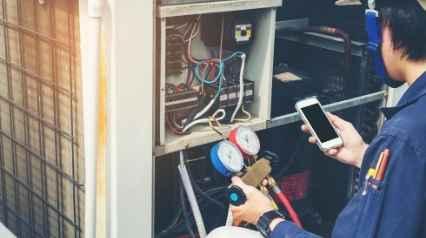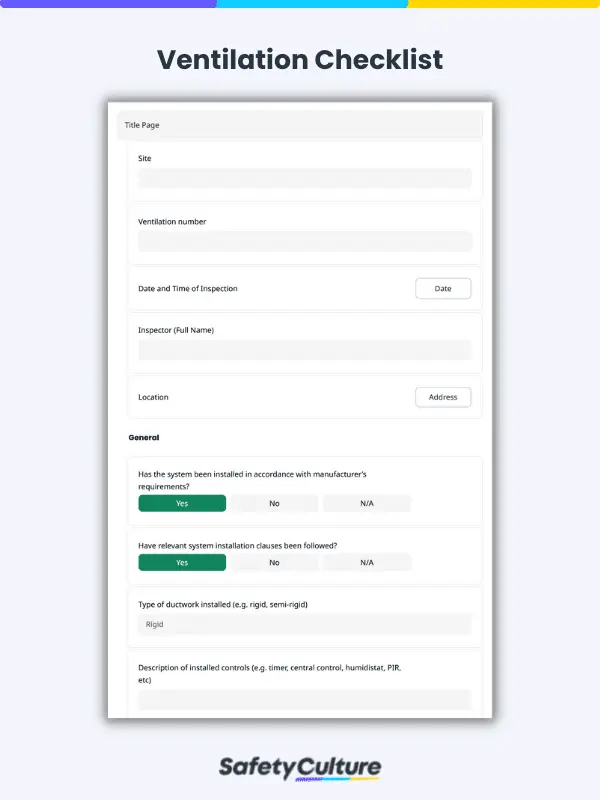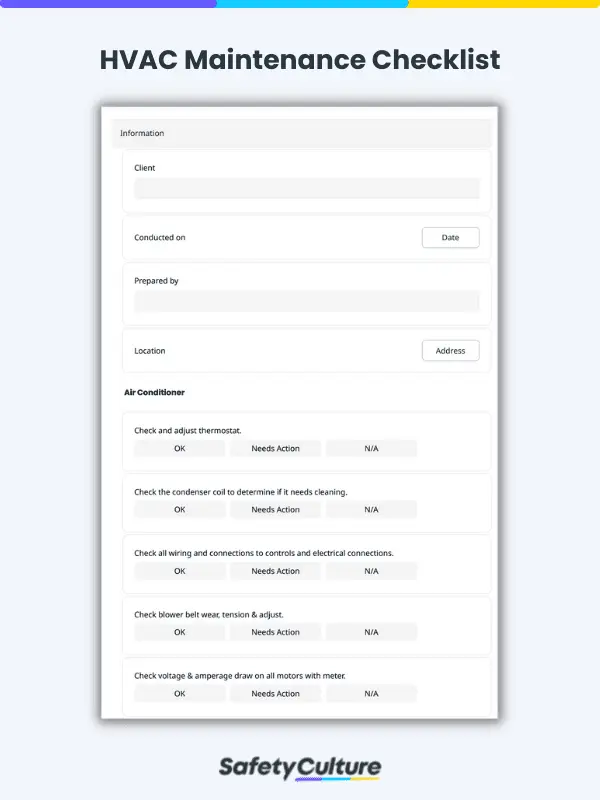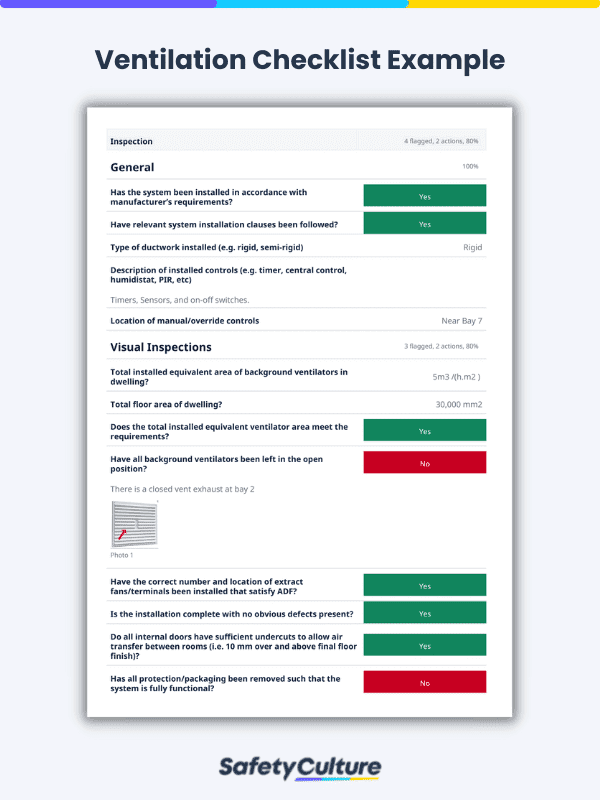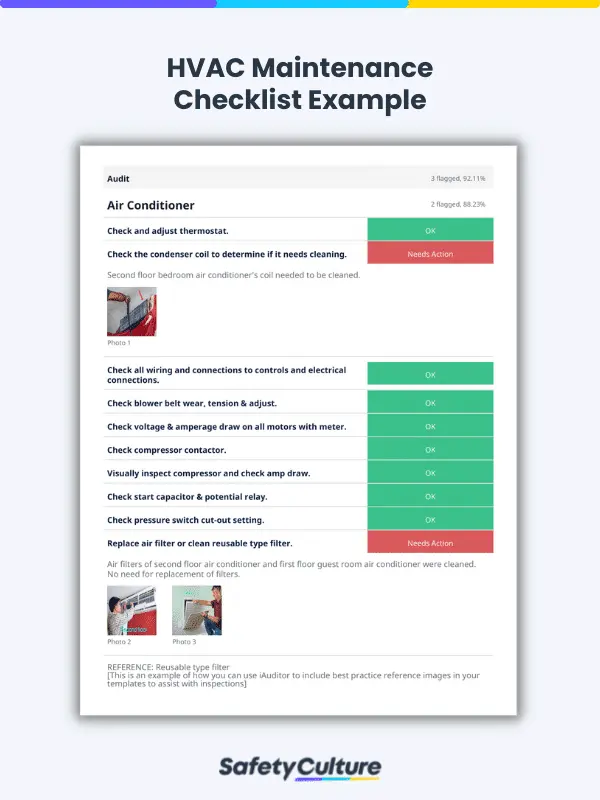What is an HVAC System?
HVAC (heating, ventilation, and air conditioning)is an all-in-one system installed inside a building or establishment to ensure good air quality, proper airflow, and comfort for its occupants. HVAC systems provide good air quality by circulating air indoors and exhausting it out of the building.
Most residential and commercial buildings are equipped with an HVAC system. Having a central unit is typical for places that experience seasonal and extreme temperature changes. HVAC systems mainly operate to control the climate of the area they’re placed in. Not only do they function for heating and cooling, they also ensure that the indoor air quality contains adequate amounts of oxygen and lacks toxic gasses. Some HVAC systems can even measure the amount of carbon monoxide present in the area.
The components of an HVAC system incorporate heating, ventilation and air conditioning functions. This includes filter, compressor, coils, blower, exhaust outlets, ducts, and other electrical parts. HVAC systems can also be referred to as air conditioning systems since there are AC units that have a heater feature. The ventilation system of these units can either be natural, which is more common, or have additional air-cleaning components such as special filters.
Requirements
Different types of HVAC systems can have different requirements. It’s important to research the design code and energy standards depending on the location of the system. The Environmental Protection Agency (EPA) stated the standard of Ventilation for Acceptable Indoor Air Quality can be found in ASHRAE standard 62.1 while standard 62.2 is the Ventilation for Acceptable Indoor Air Quality in Residential Buildings. Following these guidelines will ensure that your HVAC complies with the latest standards and best practices.
2 Main Types
HVAC Systems fall under two main categories: residential and commercial. Under these categories are different types of HVAC systems that are installed based on usage.
Residential HVAC Systems
Central heating and air conditioner split systems – This is used to centralize the climate control of the entire home. Central units commonly have the same settings, such as humidity and temperature, for every room. Homeowners can customize their units to include advanced thermostat and other features at a cost.
Ductless split systems – This the most common type of HVAC system. Consumers install this unit with the intention of cooling or heating a specific room. The unit is attached to the wall and the main housing that includes the compressor and condenser are located outside of the house. The air filter and evaporators are part of the indoor unit.
Package units – This system is the in-between of central HVAC and ductless split systems. This HVAC system is capable of cooling a larger area but is smaller than a centralized unit. Package units can be installed indoors or outdoors. The outdoor unit which contains air cooled condensers is a popular option since it requires less maintenance.
Window-type HVAC – This is recommended for smaller and specific areas similar to the split type system. The key difference is that there are no separate indoor and outdoor parts to install because the cooling coils and compressors are part of a single housing. This is the easiest to install compared to the other household HVAC systems.
Commercial HVAC Systems
Single split system – This is recommended for commercial spaces such as cafes, retail shops, and offices. The main difference from the residential split system is that additional parts, such as ductwork, can be incorporated into the system. This helps with better air distribution so the whole commercial space can be cooled or heated at the desired levels.
Multi-split system air conditioning – This system works by adding additional indoor units to a single outdoor unit. Commercial spaces that intend to install HVAC systems to multiple rooms can use this type. This option also costs less than centralized systems and the settings can be controlled per indoor unit.
Packaged Terminal Air Conditioner (PTAC) – Hotels and similar commercial buildings commonly use this type of HVAC system because it allows them to provide multiple rooms with their own climate control. Compared to window-type HVAC systems, this unit is larger and more expensive.
Variable Refrigerant Flow (VRF) – This is ideal for medium to large open layout spaces such as offices and restaurants. A VRF system can heat and cool multiple areas simultaneously. The refrigerant technology is certified to be energy efficient by providing the least amount of refrigerant depending on the temperature it was set on.
Combination HVAC system – Commercial spaces and buildings can install a combination of HVAC system types to better-fit business needs. Installing additional industrial fans is also an option that will help in achieving better air circulation. This allows the building to save energy and cut costs.
Getting to Know Your HVAC System Parts
To prolong the life cycle of HVAC systems, it is important to understand and learn their parts. This way, identifying and fixing issues becomes easier. While HVAC system parts vary depending on the type of unit, below are the 6 main components that you should familiarize yourself with, should you maintain or clean your HVAC system:
1. Heat Exchanger
One of the most essential parts of an HVAC unit is the heat exchanger. This component assists in heating and cooling. It absorbs the heat that’s produced in the combustion chamber and moves it from one place to another. It is crucial for heat exchangers to be inspected and cleaned every 12 months to identify early signs of damage. The smallest issue with this component can lead to serious health issues such as carbon monoxide poisoning.
2. Thermostat
The thermostat serves as the control for regulating and stabilizing the temperature in a residential or commercial building. It enables users to set ideal temperatures and conditions. Thermostats should be installed and calibrated correctly to prevent early wear and tear caused by the system running overtime or ineffectively.
3. Combustion Chambers
A combustion chamber, also known as a burner, is responsible for producing heated air that the HVAC system distributes. The heating cycle begins when oxygen and gas mixtures enter the combustion chamber and then a pilot light or glow stick turns on to ignite the mixtures in a controlled manner.
4. Blower Motor
A blower motor is a small but important component of an HVAC system. It is responsible for moving heated or cooled air across the ductwork. Once the heat exchanger warms air according to the desired temperature set by the thermostat, the blower motor powers its fan to blow the air towards the ductwork to distribute across the home or building.
5. Condenser Coil/Compressor
The condenser coil or compressor is responsible for releasing hot air outdoors. It lowers the indoor temperature by siphoning hot air from the inside. Using a refrigerant, it allows the air cycle of circulation and filtration to occur. The condenser coil is located outside of the home or building, which makes it prone to the accumulation of leaves, dirt, or debris that can affect its system performance. To maintain it in good working condition, regular maintenance and cleaning are required.
6. Evaporator Coil
Similar to the condenser coil, it also absorbs hot air from indoors. However, instead of releasing it outdoors, what it does is it cools that hot air using a refrigerant and then distributes it via air conditioning to lower indoor temperature. Regular maintenance and cleaning are also required to prevent the evaporator from being frozen, or damaged.
HVAC System Sensors
The most common HVAC system problems people such as contractors and subcontractors encounter often involve leaks or units consuming too much electricity. Keeping HVAC systems in good working condition is dependent on how carefully it is operated and maintained. Even energy-efficient HVAC systems, if underpowered, won’t perform optimally if it’s used in an area it isn’t designed for. On the flipside, using an HVAC system with too much horsepower isn’t cost-effective, either. High-power systems are generally more expensive, and they get more so as the rotational power increases. Your service provider should be able to help you pick the right amount for your building or establishment. If you already have an HVAC system in place, the best way to check on their performance is to regularly monitor temperature, humidity, pressure, and power consumption. An abnormal spike in power consumption can be caused by problems with the HVAC system. Take note of other appliances and gadgets that also consume power, but if abnormal power consumption patterns become a recurring problem, it is best to contact a professional who can help you inspect and diagnose any discrepancies and detect underlying issues.
Monitoring your systems doesn’t have to be manually done. Modern HVAC systems are equipped with sensors that are capable of measuring temperature, humidity, and air pressure. Sensors are key components that help HVAC systems run more efficiently. If your system isn’t equipped with a sensor or if its sensor is broken, a separate sensor can be purchased and installed. SafetyCulture’s wireless sensors are smart sensors that are capable of automatically monitoring temperature and humidity. It also helps regulate air flow to prevent unwanted issues such as mold. Often, installing a smart thermostat instead of an entirely new HVAC system will lessen the cost and also ensure that your equipment stays energy-efficient.
Aside from automated temperature readings, smart sensors help collect and organize data which can help pinpoint any unusual spikes and other issues so you can take corrective action immediately. They can also detect if any door or window is left open while the HVAC system is running and monitor air quality and carbon monoxide levels in the area. The monitoring process is streamlined to help you conduct quick inspections of your HVAC system when necessary.
Achieving Better Air Quality
The main feature of every HVAC system is the ventilation system. Proper ventilation ensures that the right amount of oxygen is circulated and aerosol substances that could be dangerous to people are eliminated or kept from recirculating. The right HVAC system should be able to remove most airborne bacteria and control moisture levels to prevent mold spores from cultivating . However, all of these benefits become useless if the HVAC system isn’t well maintained. Keeping your unit clean and leveraging the use of modern tools such as sensors will help ensure that the circulating air is always within safe levels.
HVAC Systems Air Quality Inspection Checklist Examples
Ensuring safe and clean air is important in achieving overall health and safety, but determining air quality can be difficult. Here are some digital air quality inspection checklists to assist in maintaining your HVAC systems:
Ventilation Checklist
This is a comprehensive ventilation checklist to make sure that the area is properly ventilated. This can be used as a reminder for inhabitants or employees to check on the HVAC system by conducting the checklist. The digital tool can show which items failed to meet the ventilation requirements.
Air Quality Walkthrough Inspection Checklist
This is an air quality-specific checklist to assess the air safety and also the working conditions of the HVAC system. Use this checklist to inspect the overall air quality of a facility.
Air Compressor Safety Inspection Template Checklist
This is an HVAC component safety checklist for the air compressor, which plays an important role in maintaining proper air ventilation. This checklist helps determine the state of the air compressor.
How to Troubleshoot HVAC Systems Problems
Most HVAC System issues can be seen or felt right away. The room temperature starts dropping or increasing irregularly. Another example is when the unit starts making noises it has never made before. There are problems that can be fixed easily, here’s a list of common problems and the solution for it.
- Problem: AC isn’t cooling enough even on low temperature setting – Outside temperature can affect the performance of the HVAC system. Check first if the outdoor temperature is high when the problem arises. Another thing to consider is the room is directly facing the sun. This can be fixed by drawing the curtains or installing window tints to assist the air conditioning unit. If the problem persists, there may be other factors that were overlooked.
- Problem: Suddenly making (louder) noise than normal – When this happens, your HVAC most likely needs to be cleaned. Routine cleaning is recommended when installing an ac unit and professional deep cleaning every few months. The system’s manual should contain information on how to clean the unit. There are common cleaning procedures available. Personal cleaning can be done first by changing or washing the filter. The next step is to vacuum the inside components. Take it further by washing down other parts such as the condensers or as instructed by the manual. Remember to remove the power plug or turn the ac unit breaker off and to keep the electrical parts dry to prevent damages especially to the main circuit board.
- Problem: water leaks – This can also be solved by cleaning your HVAC unit. The common reason why it’s experiencing leaks is because of dirty coils. This is why it’s recommended to clean the entire system to eliminate and prevent other problems. Inspect the drain pans as well since a damaged one is another reason for leaks. This problem can become complicated for larger HVAC Systems because a huge amount of water can pool before it gets noticed and can cause serious water damage.
Achieve operational excellence
Cultivate a culture of excellence with our digital solutions that enhance efficiency, agility, and continuous improvement across all operations.
Explore nowHVAC System Maintenance Checklist Examples
Consistent maintenance of HVAC systems prevents common issues that are often avoidable. Problems occur often when regular maintenance and inspection schedules are missed. Here are some digital checklists to help you take preventative measures and create a corrective action plan.
HVAC Maintenance Checklist Template
This is a detailed HVAC maintenance checklist that is divided per function. The functions inspected include the air conditioner, heat pump, electric heater, and furnace.
Commercial HVAC Maintenance Checklist
This is an HVAC maintenance checklist specifically designed for commercial units. Help employees conduct a thorough maintenance inspection of the system in the building and keep audit records for future reference.
HVAC Maintenance Checklist
This is a general maintenance checklist that inspects every vital component of the HVAC system. Use this checklist to make sure that every part is in proper working condition.
Create your own HVAC Maintenance Checklist
Build from scratch or choose from our collection of free, ready-to-download, and customizable templates.
Browse HVAC Maintenance ChecklistsHVAC System PDF Report Sample
Here is an HVAC ventilation checklist PDF report example. The ventilation inspection report contains necessary information and the required actions to correct or fix areas where issues were found.
This HVAC maintenance PDF report example also includes the necessary details similar to the previous PDF report. This checklist was customized to fit the needs of an organization. Images can be attached as photo evidence of an area or component. Both reports will highlight the failed items and including corrective actions is an option.
SafetyCulture as HVAC System Checklist App
HVAC systems make life and work more comfortable by ensuring better air quality, proper ventilation and air flow, and providing a means for temperature control. However, maintenance can be cumbersome, and costly when a problem arises. Prolonging the life of your HVAC system is possible by regularly monitoring and inspecting your heating, ventilation, and cooling units. SafetyCulture (formerly iAuditor) can help ensure that time isn’t wasted on fixing preventable issues by providing equipment inspection, tune-up, and maintenance checklists. Further streamline HVAC system maintenance processes by integrating smart sensors, which automatically monitors the current air quality and allows you to view sensor readings and past inspection audits directly on your mobile device. Streamline your HVAC maintenance processes and never miss scheduled inspections again with the SafetyCulture mobile app.
